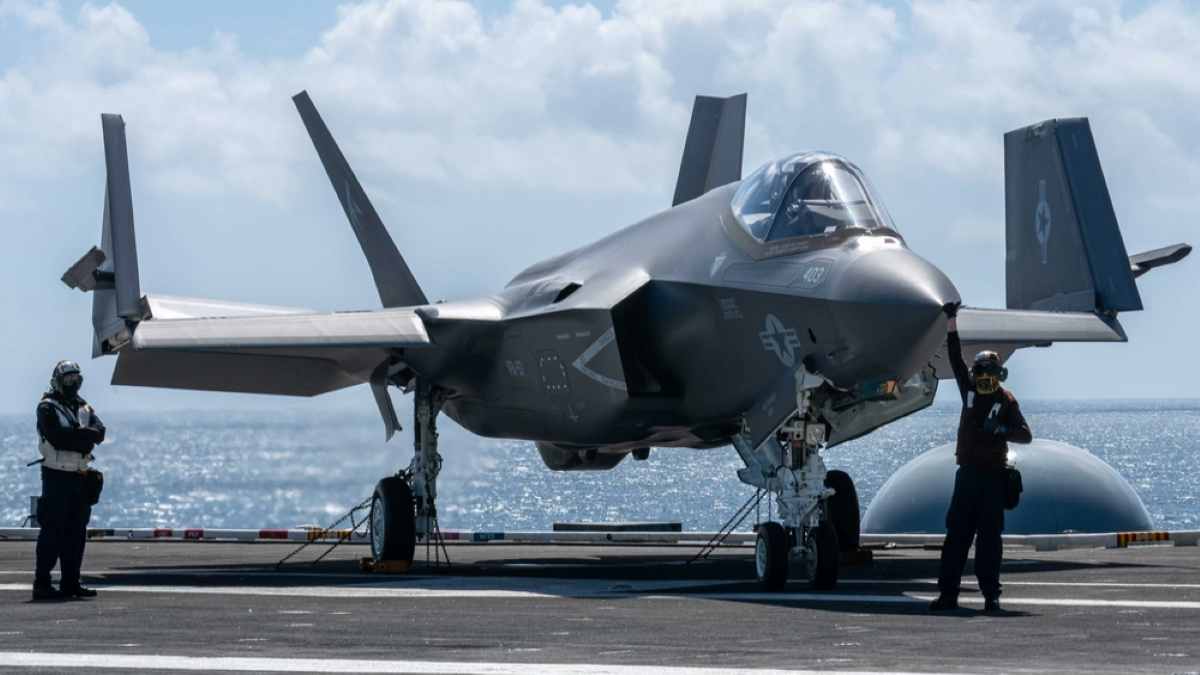
The U.S. military is “weak” and at serious risk of being unable to address significant regional conflicts simultaneously should they arise, a new report found.
Released on Wednesday, The Heritage Foundation’s 2024 Index of U.S. Military Strength report revealed how America’s premiere fighting force is ill-equipped to protect U.S. national interests. The 2024 analysis represents the second consecutive year Heritage’s index rated the U.S. military as “weak.”
“As currently postured, the U.S. military is at significant risk of not being able to defend America’s vital national interests,” the document reads. “This is the inevitable result of years of prolonged deployments, underfunding, poorly defined priorities, wildly shifting security policies, exceedingly poor discipline in program execution, and a profound lack of seriousness across the national security establishment even as threats to U.S. interests have surged.”
In assessing the military’s effectiveness, Heritage analyzed the “capacity,” “capability,” and “readiness” of every branch of the armed services and provided each with an “overall” score. From worst to best, the scale used to rate each branch is: very weak, weak, marginal, strong, or very strong.
While the Army and Space Force were classified as “marginal,” the Navy and Air Force were graded as “weak” and “very weak,” respectively. The report specifically highlighted the Navy’s waning fleet size and inability to repair ships in a timely fashion as major problems facing America’s maritime power. Similarly, the analysis noted the Air Force’s failure to maintain at least 1,200 “active-duty, combat-coded fighter aircraft” needed to “manage more than a single major conflict” as a factor contributing to its poor score.
The Marine Corps garnered a “strong” classification, making it the best-rated branch scored by Heritage. The report noted this was because “the Corps’ capacity is measured against a one-war requirement rather than two (to which the other services are held) and because the Corps sustained its efforts to modernize … and enhance its readiness during the assessed year.”
Heritage also rated U.S. nuclear capabilities as “marginal.”
The Marine Corps and Space Force were the only branches of the U.S. military to meet their 2023 fiscal year recruiting targets. The Army, Navy, and Air Force missed their goals by roughly 10,000, 7,400, and 2,700 recruits, respectively.
In addition to assessing the military’s internal problems, the Heritage report examined the force’s operating environment in various regions of the world and America’s biggest adversaries. The analysis highlighted China as the nation that represents the “most comprehensive and daunting national security challenge” facing America domestically, regionally, and internationally, and specifically noted the People’s Liberation Army’s increasingly aggressive behavior and expanding warfare capabilities.
“The Chinese military can no longer be viewed as a distant competitor,” the report reads. “If current trends persist, the gap between the Chinese and U.S. militaries will likely narrow further, and the idea that China might surpass U.S. capabilities in some fields will seem far less implausible.”
Other international antagonists detailed in the analysis include Russia, Iran, North Korea, and a “broad array of terrorist groups.”
“The 2024 Index of U.S. Military Strength sounds a loud alarm on the decade-long saga of our military’s decline—a perilous path marked by years of overextension, deployments, and a lack of prioritizing defense spending on what is needed to fight and win America’s wars,” Heritage’s Rob Greenway and Dakota Wood said in a statement. “Yet, the chance to restore American military might remains—if we heed the urgency and act decisively.”









